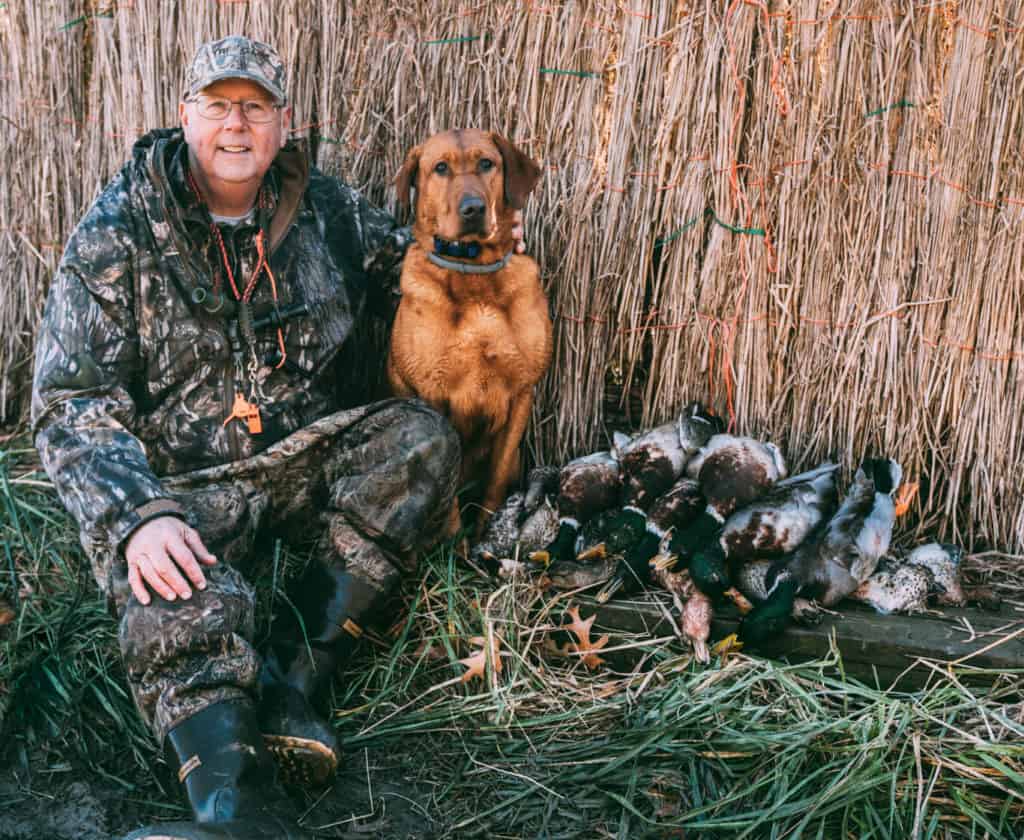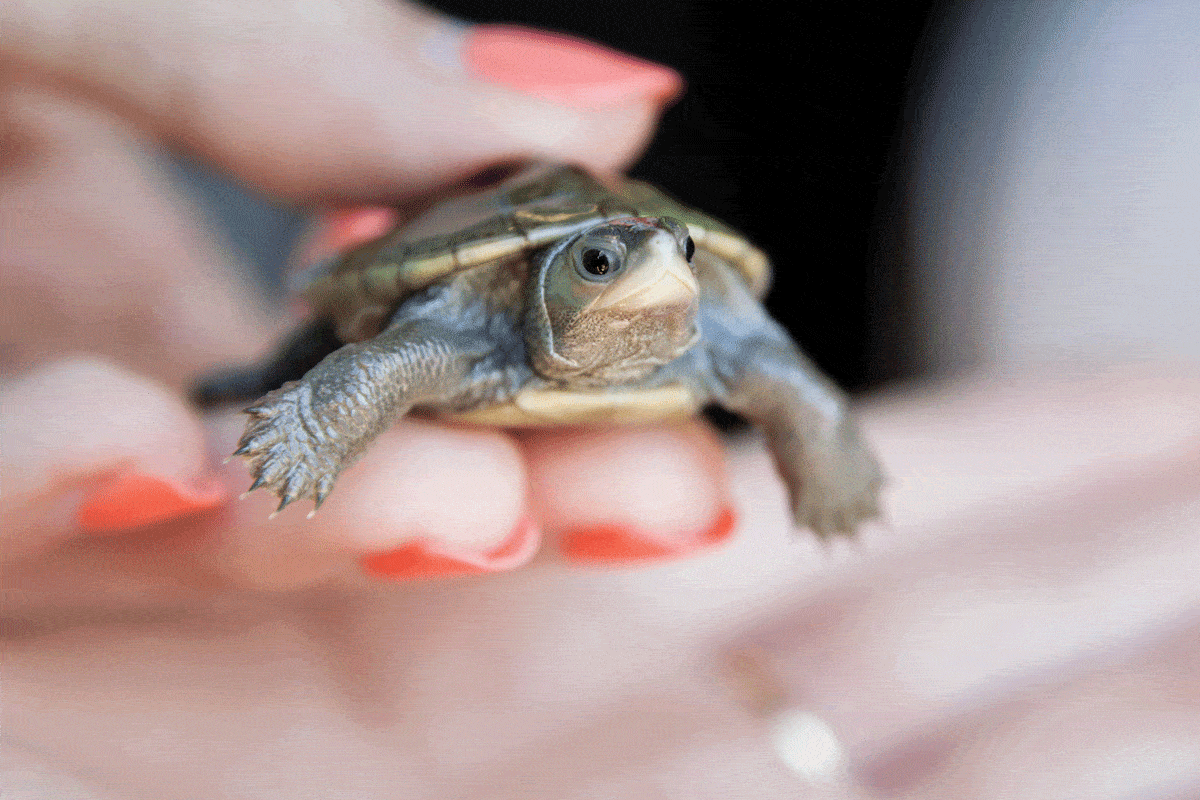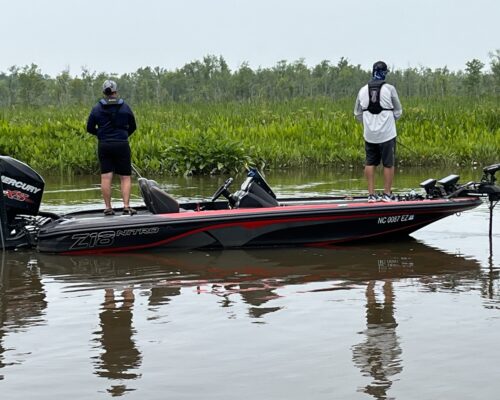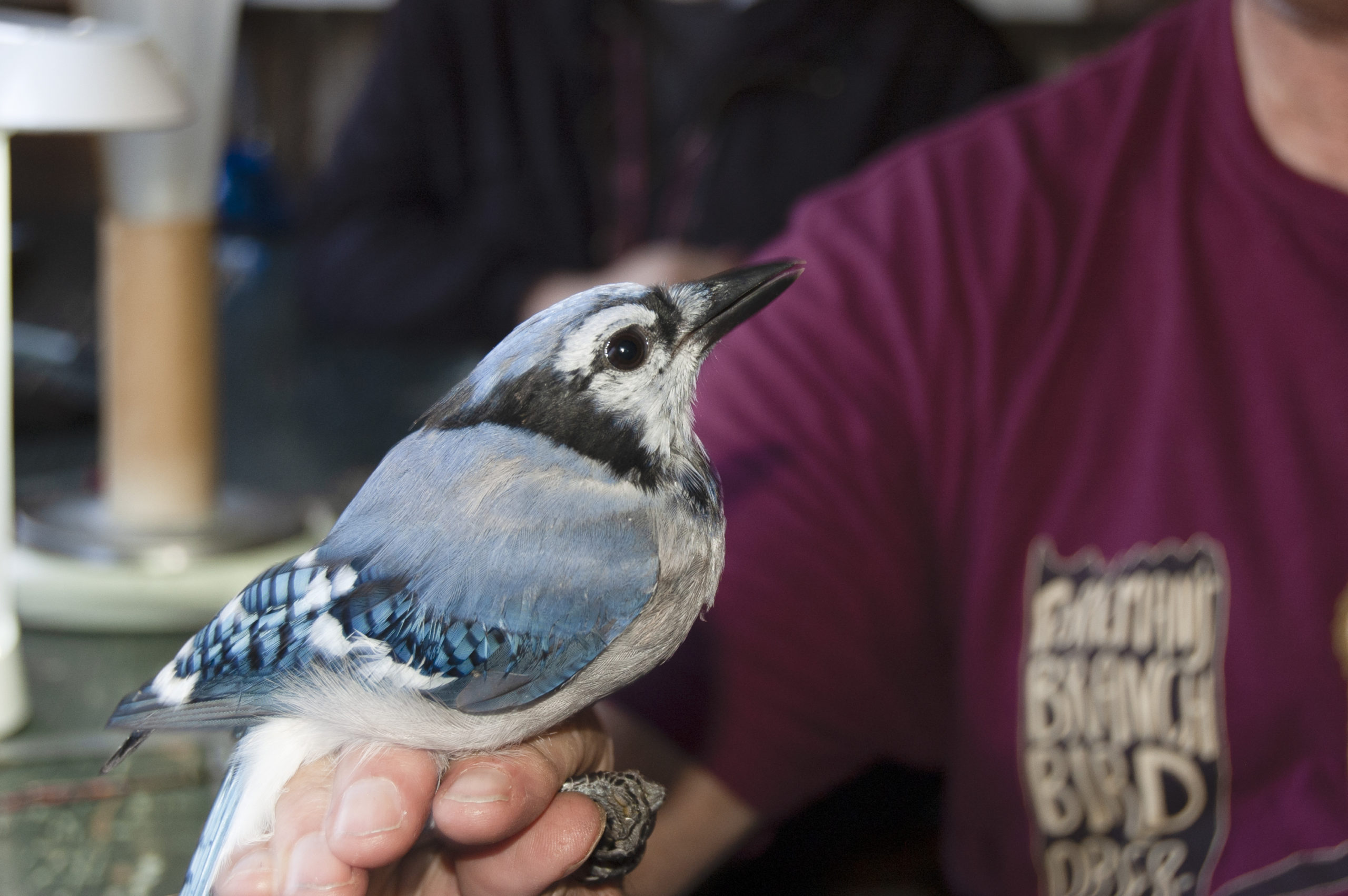Larry Hindman breeds and trains distinctive fox-red yellow labs—his preferred hunting companions.
The calendar says mid-September. The weather, crisp as a Winesap apple, foretells fall. But Larry Hindman and the two yellow labs pacing in his pickup’s metal dog chest are thinking months ahead, anticipating a frosty hunting blind at dawn as geese descend on a spread of decoys.
On this morning, a fellow hunter’s farm ponds host rehearsal for the Eastern Shore waterfowl season as Hindman puts Keeper, 4, and Pepper, 2, through their retrieving paces. Retired after more than four decades with the Maryland Department of Natural Resources, much of it as chief waterfowl biologist, the Talbot County resident and son of the South has found his new calling breeding, training, and hunting dogs of a different color: “fox-red” yellow labrador retrievers. Their striking auburn coats are a throwback to the yellow lab’s original hue of more than a century ago, gradually bred to pallor as popular taste in the canines changed.
In that sense, Hindman’s fox-reds make fitting companions for their old-school minded owner. A respected biologist and lifelong hunter, he earned a reputation for his quiet-but-steady commitment to waterfowl conservation at DNR, an approach that occasionally clashed with public demands.
As we pull into a dirt driveway, Hindman hails the farm’s owner on his cell phone.
“You fishing today, Butch?”
“Nah.”
“Okay, we’re coming over to train.”
“Alrighty.”
Hindman stops the truck between two smallish training ponds punctured by several peninsulas. As we walk through Butch’s rough-cut field to the nearest pond, crickets scatter in all directions. It’s breezy with a nip in the air. There are no waterfowl in sight.
For training purposes, Hindman deploys buoyant white bumpers—soft plastic, nearly foot-long knurled batons—to simulate a downed duck or goose. He hand-tosses or mechanically launches these splash-test dummies, sometimes two or three at a time, to teach his retrievers patience and discipline as well as verbal commands, visual cues, and the art of the “blind retrieve,” when the dog must locate a felled bird it cannot see.
Hindman returns to the truck and unlocks Pepper’s kennel first. She clatters down a ramp from the truck bed and they proceed to the water’s edge. Hindman flings two bumpers for the dog to mark. Pepper sits obediently at his feet as he tries to get her to start prematurely.
“Butch!” he yells sharply. She stays put.
“Larry!” Her soft ears twitch but she’s otherwise motionless.
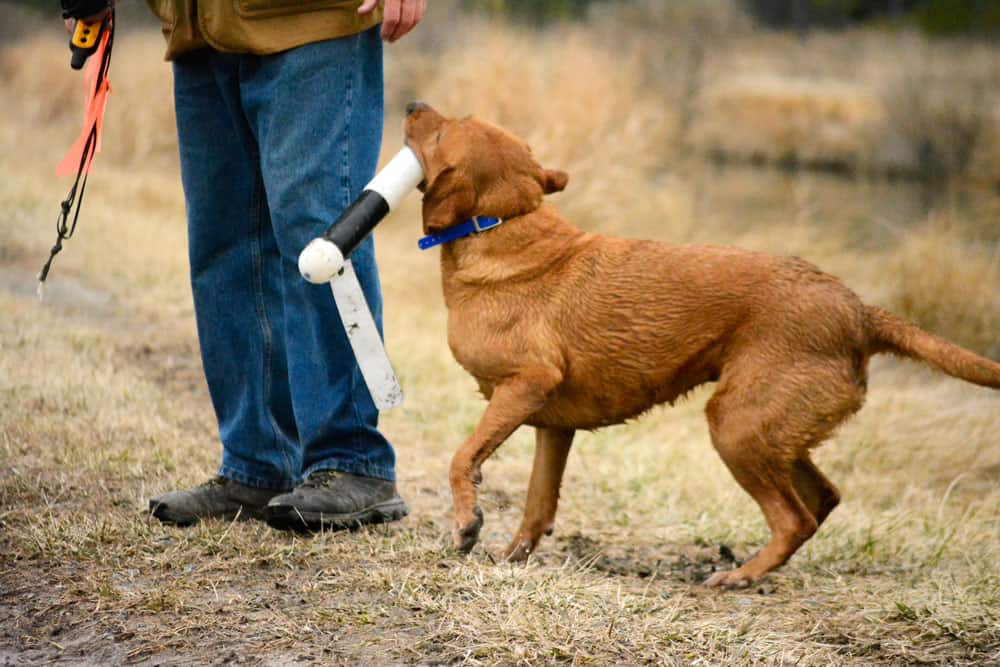
“Pep!” Off she goes, launching her lean body into the water and swimming toward the first bumper about 30 yards away. Securing it gently in her mouth, she paddles back, delivers it to him on command (“Fetch!”), sits at his side (“Heel!”), and releases the bumper (“Drop!”).
A piercing training whistle helps alert her when needed. When Pepper can’t locate the last bumper of the next round Hindman throws, he blows the whistle and, waving his hands like a referee signaling out of bounds, “casts” her left toward the bumper. It’s important, as positive reinforcement, that the dogs are able to find the marks, he says. “They’ve got to trust that there’s something there.” Practiced over and over, the drills condition retrievers for hunting. “They learn through repetition.”
They get lots of that. Hindman belongs to a social circle of a half-dozen or so trainers from Talbot and Dorchester counties who, when they’re not hunting, gather on weekends at one another’s farms to school their dogs and hobnob.
“Labradors are kind of situational learners. They learn something in one place and you take them to a new place and it’s like they forgot it,” he says. “So we train in multiple places to make our dogs more well-rounded and get them to do what we want.” Most of the dog owners who train with Hindman also hunt with him.
Gentle, doe-eyed, and extremely devoted, labradors are America’s all-around favorite dog. The breed’s physical attributes— a thick, so-called “otter” tail that serves as a rudder; large paws for paddling; an insulating, water-repellent coat; and a keen nose that can detect a bird in the middle of the densest marsh—also make labs accomplished hunting companions, particularly in water. In Newfoundland, where they were first worked (“Labrador” being a misnomer of baffling origin), fishermen used them to haul nets and fetch fish that escaped their trawls.
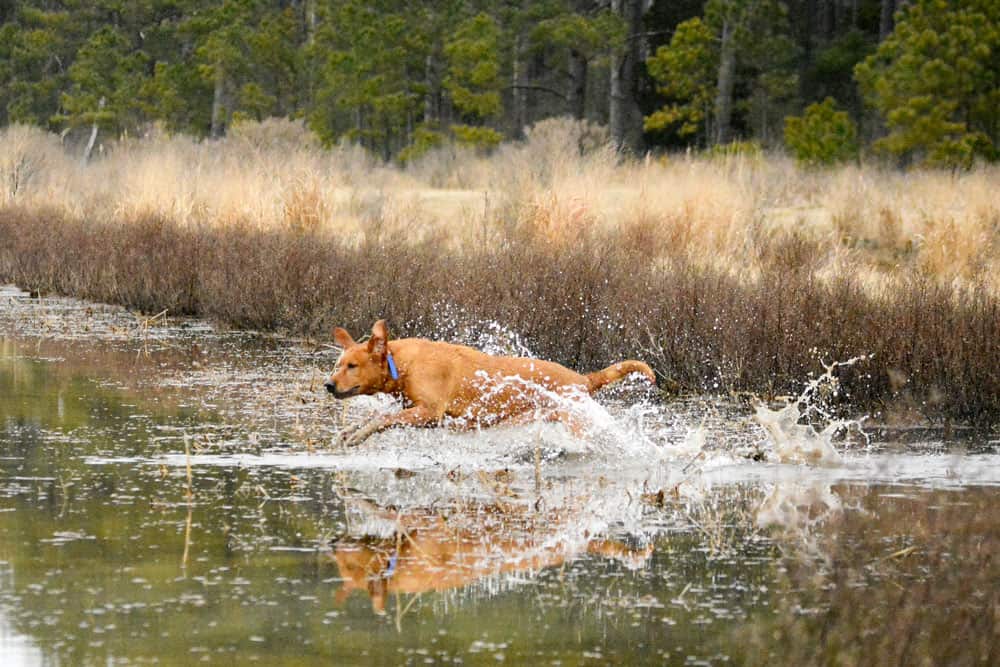
Photo Courtesy of MD DNR
Not all waterfowl hunters employ dogs. They should, says Butch, a stocky man dressed somewhat unseasonably in shorts, who’s just driven up on his ATV. Without dogs, the two friends conjecture, hunters may fail to retrieve up to 30 percent of the birds they shoot, including wounded escapees only retrievers are likely to locate. “They’re a great conservation tool,” Hindman likes to say of his dogs.
For 42 years, conservation was Hindman’s primary focus at DNR. Raised in rural Kentucky, where he hunted squirrels and rabbits in nearby farm fields, he went on to receive his bachelor’s and master’s degrees at Eastern Kentucky University before coming to Maryland.
When he took his DNR biologists’ examination in Baltimore, the city-shy applicant camped in a state park, sleeping in his International Harvester Scout. Offered employment with both the agency’s fish and wildlife divisions, he chose the latter and became a district wildlife manager at Havre de Grace in 1973 before landing a job he craved in DNR’s waterfowl division.
He was mentored by a legend in the field: Vernon Stotts, DNR’s then senior waterfowl biologist, known for his studies of black ducks and pioneering work on aerial bird surveys. When Stotts retired in 1981, Hindman succeeded him as waterfowl project manager for DNR’s Wildlife and Heritage Division. He forged his own notoriety with one of the Chesapeake’s iconic waterfowl species, Canada geese.
By 1995, the population of Atlantic migratory Canada geese—birds that traditionally winter on the Eastern Shore in vast numbers—had fallen more than 75 percent in less than a decade, reaching an alarming all-time low of 29,000 nesting pairs at their breeding grounds in the Canadian Arctic. Joining other U.S. and Canadian Atlantic Flyway Council partners, Maryland imposed what would become a five-year moratorium on the hunting of migratory Atlantic Population (AP) Canada geese, then a $40-million industry on the Eastern Shore. As DNR’s waterfowl project manager and chairman of the Flyway Council’s Canada goose technical committee, Hindman had to explain the closure’s science-based rationale to Marylanders whose livelihoods were dependent on goose hunting. Many weren’t inclined to be persuaded.
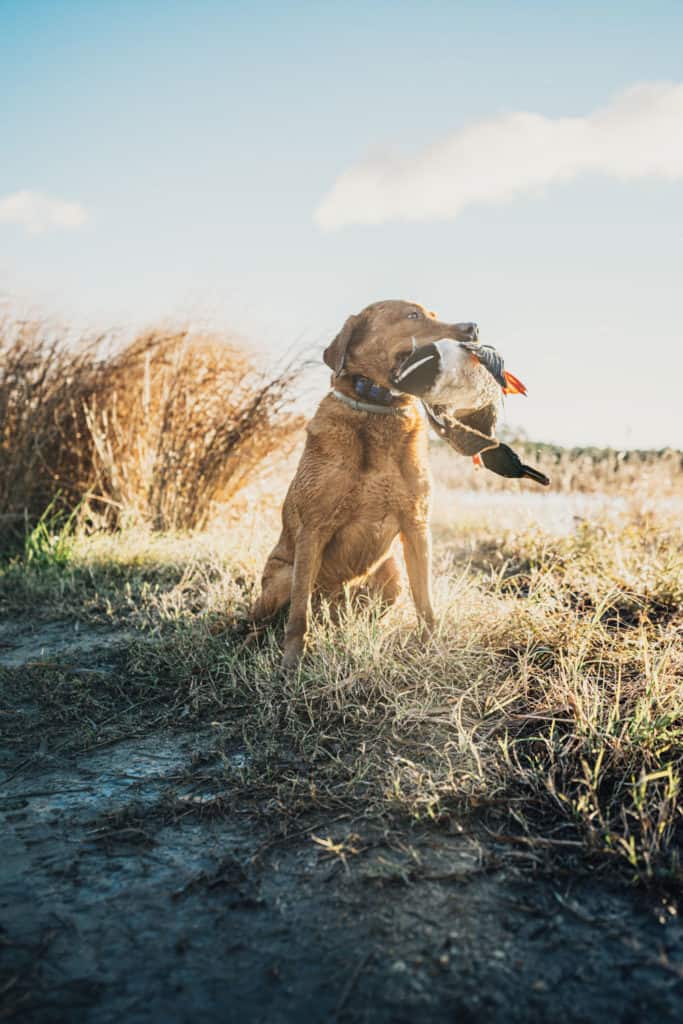
“He went against the grain of something he knew was going to be unpopular,” recalls Steve Meyers, who as president of the Potomac River Waterfowlers Association and a member of Ducks Unlimited, sat in on Hindman-led public meetings and came to know him better. At times, the resistance was downright menacing, Meyers says. “There were threats against him and he had state police and Natural Resources police bodyguards.”
“I had outfitters calling me, raising hell with me,” Hindman acknowledges. “We had public meetings, and for a few of them I had to wear a bulletproof vest.” But he persevered, unharmed and unruffled.
“Larry didn’t waver. He did the right thing,” says Meyers, who has since retired to Delaware and remains friends with Hindman. “That tells you so much about that man’s character. Everybody looking back on it knows that what he did was the right thing. People were looking at waterfowl [from the perspective of] their own personal enjoyment and economic value. Larry changed a lot of people’s attitude about the resource.”
“I don’t have any regrets. It’s something we felt we had to do,” Hindman says of the hunting ban. He credits then-DNR Secretary Torrey Brown with making the difficult call. When wildlife officials determined that the geese’s nesting population had regained sustainable numbers, Maryland lifted its moratorium in time for the 2001 hunting season.
To bolster the science behind hunting regulations, Maryland’s goose point man helped implement a first: a breeding-ground monitoring plan that took him all the way to the birds’ nesting territory in northern Quebec’s Ungava Peninsula. There, Hindman dined on caribou, stayed in an Inuit fishing camp with other biologists, and tramped the tundra monitoring the birds’ nests, which are hollowed in the snow. Breeding ground surveys still influence the Flyway Council’s Canada geese population management. “Currently we target a harvest rate of no more than seven percent of the adult population,” Hindman says, lapsing into his former role.
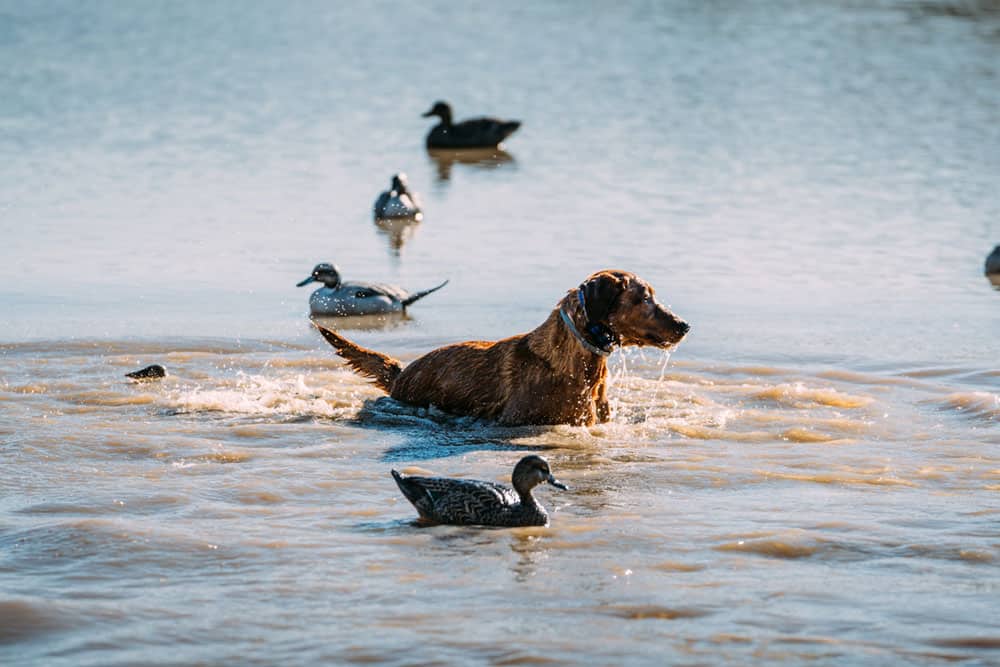
Confronting skepticism with scrupulous data collection, Hindman, a soft-spoken scientist who retains his Southern accent, guided DNR’s waterfowl management program for decades while maintaining his ties to hunting.
“He took his responsibilities very seriously and always has,” says Chip Heaps, recently retired senior director of development for Ducks Unlimited’s mid-Atlantic division. Heaps worked with Hindman as a member of the state’s Migratory Waterfowl Advisory Committee (now the Migratory Game Bird Advisory Committee), beginning in 2002.
“His number-one concern was the waterfowl resource, but number two was the hunter,” Heaps says. “He realized the importance of hunters in the conservation community and all they do for waterfowl.”
An avid upland bird hunter for years when he owned Brittany spaniels, Hindman transitioned to waterfowl after a friend presented him with a black lab named Pete. The spaniels and Pete were also workmates. “They didn’t get paid by the DNR, but they got in on some neat stuff,” he says.
The Brittanies spotted woodcock nests, enabling Hindman to catch and band the chicks. And Pete once accompanied his owner when the biologist investigated a die-off of tundra swans on Marshyhope Creek. In a single outing, Pete managed to retrieve 18 swans for necropsy from the creek’s boot-sucking muddy bottom. “He was a tough dog,” Hindman says.
He began breeding labs 14 years ago. One of Hindman’s waterfowl hunting pals, a retriever field-trial judge, put him in touch with a breeder from Oklahoma. He purchased Teal, the fox-red yellow lab he owned until the dog passed away in 2019.
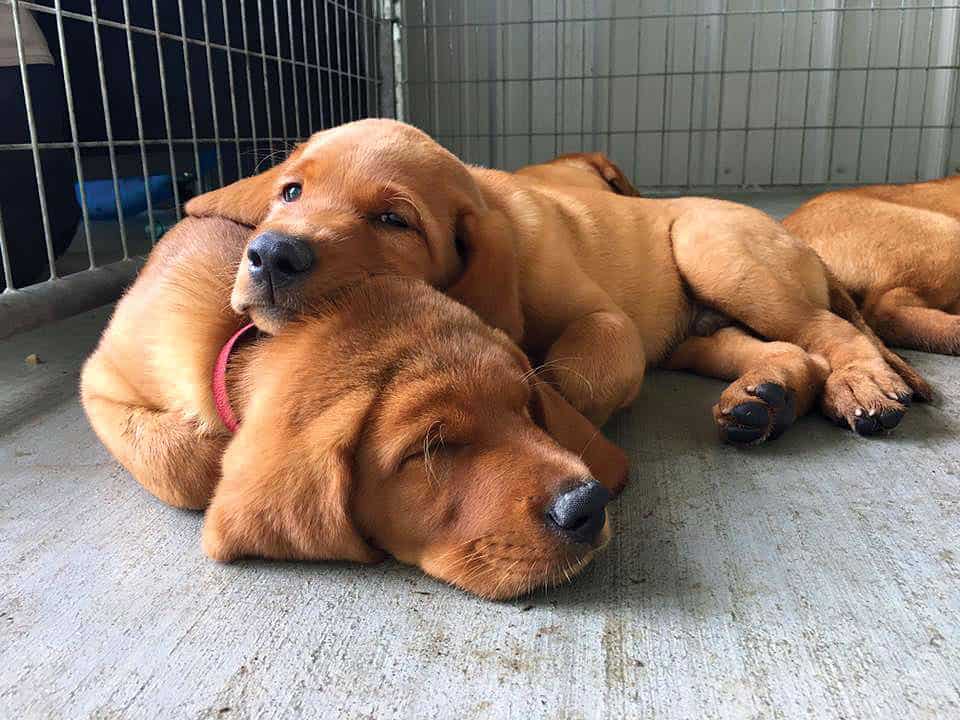
“I’ve had retrievers ever since,” he says. He currently has three: Keeper, Pepper, and 8-year-old River, all females he breeds for his business, Yellowdog Retrievers. They live on the eight-acre farm Hindman owns with his wife, Joy, in Trappe. Every morning, Hindman visits the dogs’ compound to feed and hang out with them. As they chow on high-protein kibble, he watches the morning news on a TV in the office, which is festooned with the labs’ prize ribbons and trophies.
“They’re almost like your children,” he says. (When I first met Hindman two years ago, he scrolled through dog photos on his iPhone like a grandfather showing off his grandkids.) “They’re affectionate and they love to do what they’re bred for. The only bad part about having a dog is having to deal with the loss. They just don’t live long, you know.” His thoughts drift back to Teal, whose 13 years matched a labrador’s typical lifespan. “She was hunting the day she died, probably rabbits,” he says. “You get so attached to them.”
Yellowdog Retrievers isn’t a for-profit venture. The proceeds Hindman takes in from selling puppies at $2,000 apiece cover the $12,000 to $15,000 he spends annually on his labs’ premium dog food, veterinary bills, medications, kennel and training equipment, plus entry fees and travel costs for retriever competitions. He prefers selling to buyers who will train and hunt his puppies, although a few become strictly pets.
Hindman’s female labs attract stud suitors from across the country whose owners prize the dogs’ unusual fox-red coat and pedigreed bloodlines. They’re bred by artificial insemination, usually in the spring, in consultation with a canine reproductive specialist from Philadelphia. Litters are born in a heated whelping box in Hindman’s office. The pups are sold at eight weeks old after they’ve been health-tested so Hindman can guarantee they’ll have sound hips and elbows as adults.
Professional retriever training can be a lucrative gig. Hindman prefers to work only with his dogs, entering them in competition every spring and fall. River, whose father was a national field champion but whose own competitive career has been limited, is his best retriever, Hindman says. She’s particularly adept at blind retrieves. “You give her the line [align her spine to the mark] and she’s exceptional on running a straight line,” he says.
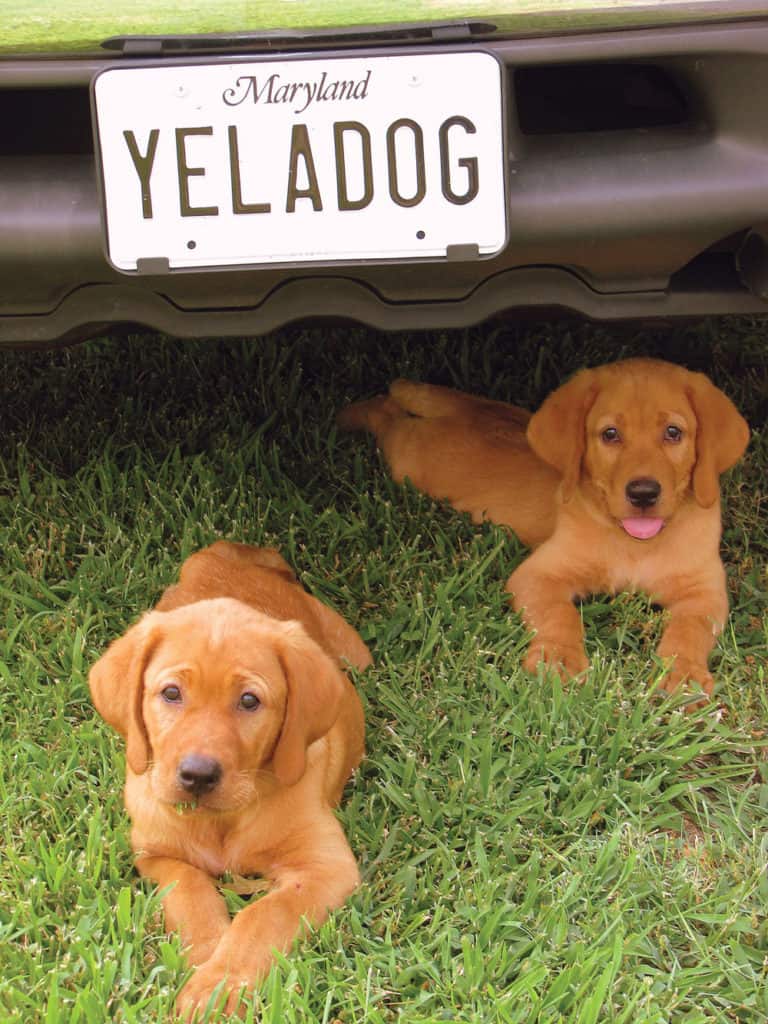
Keeper has earned several retriever titles, including the Maryland Retriever Club’s senior hunting retriever for 2019. And, based on training sessions like today’s, Hindman has high hopes for Pepper, who’s nicknamed “Little Red Corvette.”
When Hindman finishes Pepper’s training, he releases Keeper, who’s even livelier than the little ’Vette. She jumps and twirls in the air, her tongue tasting the breeze. We walk downhill to the second pond, which envelopes a grassy island. Hindman throws a bumper on the far side of the island and on command Keeper, her folded ears rising like wings, belly-flops into the water, gallops over the grassy isle, and quickly locates her mark on the other side. She returns as enthusiastically as she departed.
She could have taken a roundabout but drier route by following the pond bank until she neared the bumper, but she’s been “decheated,” a training term for teaching dogs to perform straight-line retrieves. After several more drills, Hindman loads up Keeper and heads home with his dogs. “You always want them to be eager when you finish,” he says. “You want them to need more.”
Hindman and his friends see to the adult dogs’ formal training, which begins at age six months. His family helps rear Yellowdog Retrievers’ puppies. The Hindmans’ son and daughter have hunted with their father and—though too young to hunt—the couple’s granddaughters, Kherington, 8, and Kylie, 6, love to get hands-on with the pups.
“Both our granddaughters help socialize all the pups in the litters we produce, giving them lots of attention,” Hindman says. The girls also accompany him in the field. “They help me put decoys out,” he says. “They like dressing up in the camo. They just like being out there with Pop-Pop.”

The season will soon begin for AP Canada geese, the birds Hindman most likes to hunt. In December and January you’ll find him sipping coffee in a blind on his or his next-door neighbor’s farm, side by side with his hunting companions, human and canine. For 41 years, Hindman flew on the Atlantic Flyway Midwinter Waterfowl Survey, a joint federal and state aerial count of more than 500,000 ducks, geese, and swans along the Chesapeake and Atlantic coast shorelines. He oversaw DNR telemetry studies that monitored thousands of ducks, including wigeons, canvasbacks, and ruddies. He never tires of watching waterfowl, from above or below.
“I’m mesmerized watching ducks and other birds working out in the wind.” From the cover of an evergreen-brushed hide this winter, Hindman will call the birds he once staked his reputation to protect. “I love seeing geese set up and cut the wind. I love to see them coming in and then flip upside down to lose altitude,” he says.
As they come closer, wings spread, he’ll aim and fire. Then River, Keeper, or Pepper will spring into action. The retrievers are as much a part of his love for the sport as the shooting, Hindman says. “We probably wouldn’t hunt if we didn’t have dogs.”

